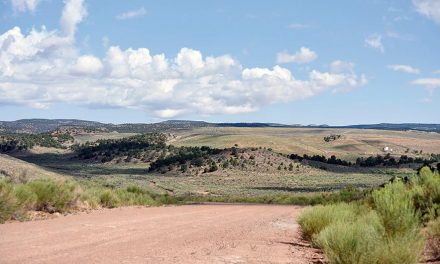
50 Years Ago: White man’s way of learning questioned in national study
A national study on American Indian education has been released and it’s causing a lot of debate within the BIA and tribes over its main theme – forcing Native American students to learn the white man’s way of education isn’t working.
This may seem obvious in today’s society but, back in 1970, after six decades of education under the BIA, the main thrust on the Navajo and other reservations was to ignore Native culture and force Native students to learn the same way that white students do throughout the country.
This was the beginning of the period when tribes were experimenting with other ways of teaching their students.
Rough Rock Demonstration School had been in existence for several years with a curriculum heavily favoring teaching a strong dose of Native culture but its approach was still looked upon by many educators as something unique that would not work for the average Native students.
But times were changing. The Window Rock Public School District in 1979 began holding Native culture classes in the high school and several other public schools were thinking about doing the same in 1971.
Both candidates for chairman – Raymond Nakai and Peter MacDonald –also supported changes in the way Navajo students were taught, although MacDonald made it a more important part of his campaign as the first step toward the tribe becoming self-sufficient.
The study, done by the U.S. Department of Education, looked at the question for three years before issuing the report. It came out strongly in favor of developing an education model that combined the best parts of the white man’s and Native cultures.
It summed up its finding by quoting John Woodenlegs, a member of the Northern Cheyenne Tribe, who said that Native educators feel that the values taught to Native children in the past as a way to cope with life “can still serve us well in modern society.”
The same thing was being preached by MacDonald, who would say during his campaign and in his inaugural address, the days of Native students attending BIA schools not being allowed to speak their Native language were over. This report would pave the way to major changes in both public schools and BIA boarding schools over the next couple of years.
As tribal members headed into another winter predicted to have major snowstorms, Navajo tribal officials for the first time were urging tribal members, and especially those who lived in remote places far from the main roads, to being better prepared this coming winter season.
Tribal residents had been hit hard the previous two winters with snowstorms that seemed to come one after another, resulting in many tribal members being stranded at home for two weeks or more waiting for the weather to break.
During both the 1967 and 1968 winters, helicopters were used to bring food and supplies to stranded Navajo families and livestock. In a few cases, the helicopters were needed to transport sick patients to nearby hospitals. The big debate going on within tribal circles was whether it made sense to have chapter houses stock up with food that could be distributed when the weather turned bad.
There was some talk about having emergency food bags at the chapter houses that could be distributed to families a day or two before the snowstorm were expected to arrive.
But there was fear that families having no problems making it to stores during the snow crisis would take so many of the food bags that there would not be enough for the families who really needed them. Howard Gorman, a Council delegate from Ganado, was a big supporter of this approach, saying chapter officials knew all of the families in their area and would know who needed the food and who would not.
He said each chapter could make out a list of names of people who lived in remote areas and this could be used to determine who would be eligible to receive the emergency food supplies. But others pointed out that chapter officials would be pressured by their supporters to put their names on the list whether they needed the food or not.
Their solution called for the tribe to urge those who needed the supplies to purchase the food on their own and have it ready if needed. The two winters only saw a few deaths, mostly from exposure to cold, but livestock fared far worse especially if the storms kept families from getting enough hay and other supplies needed to keep their livestock from starving.
Realizing that the families needed their livestock to bring in revenue, tribal officials agreed that if the crisis lasted more than a week at any time, helicopters would be used to drop off hay as well as food for the stranded families.







 Highway 264,
Highway 264, I-40, WB @ Winslow
I-40, WB @ Winslow